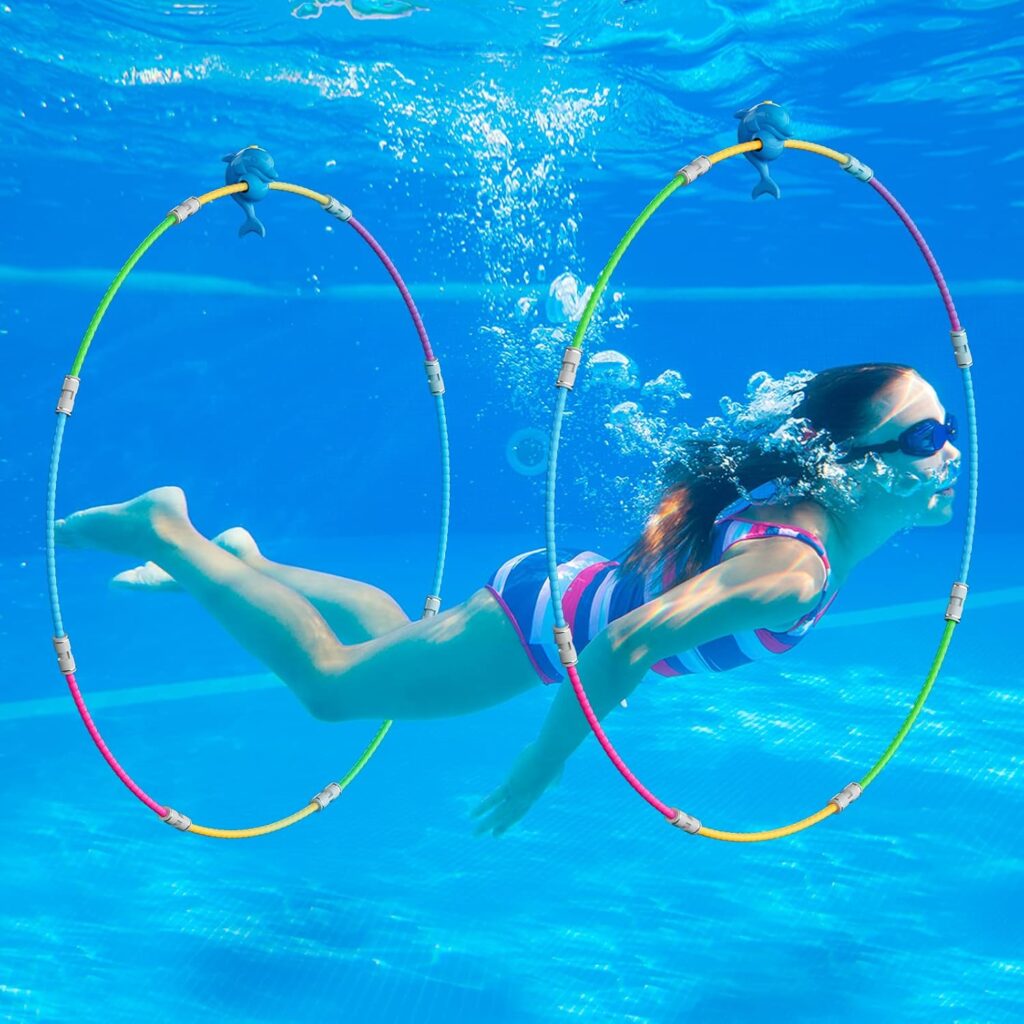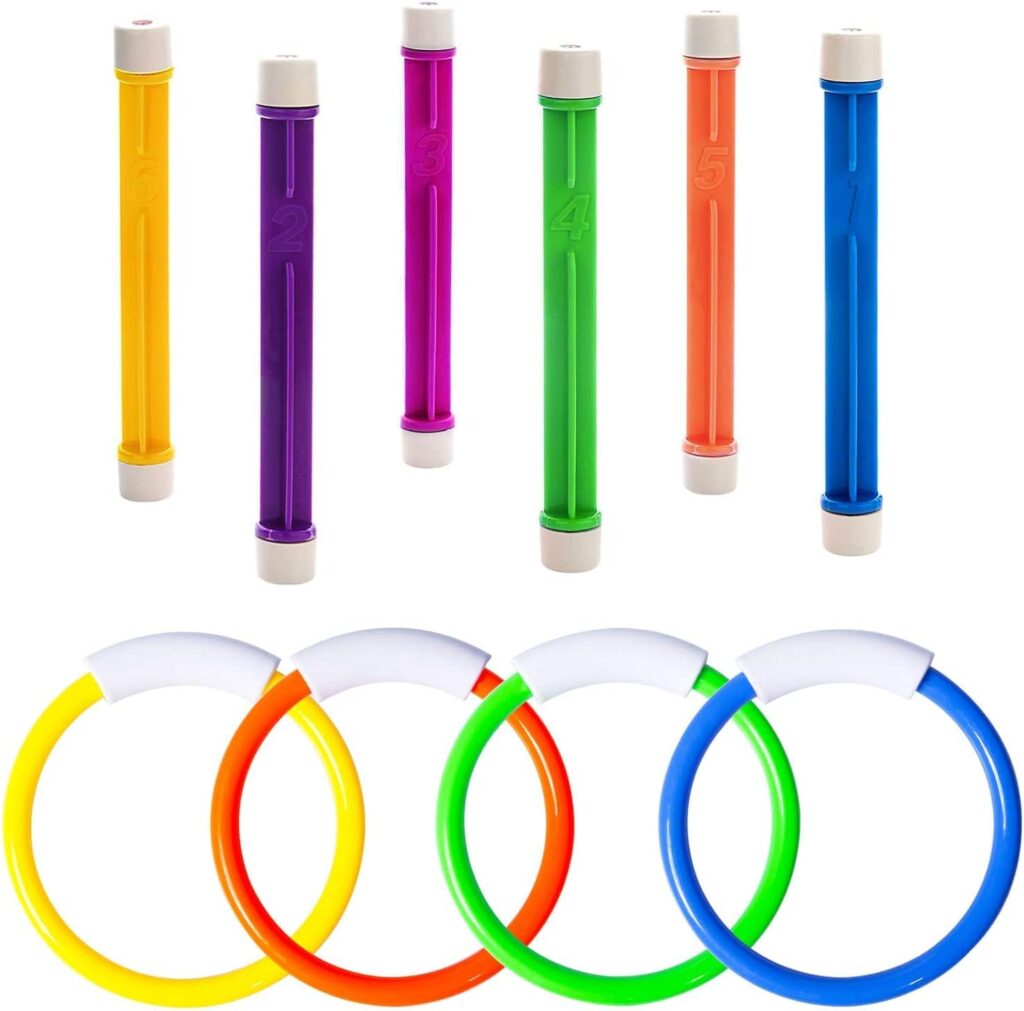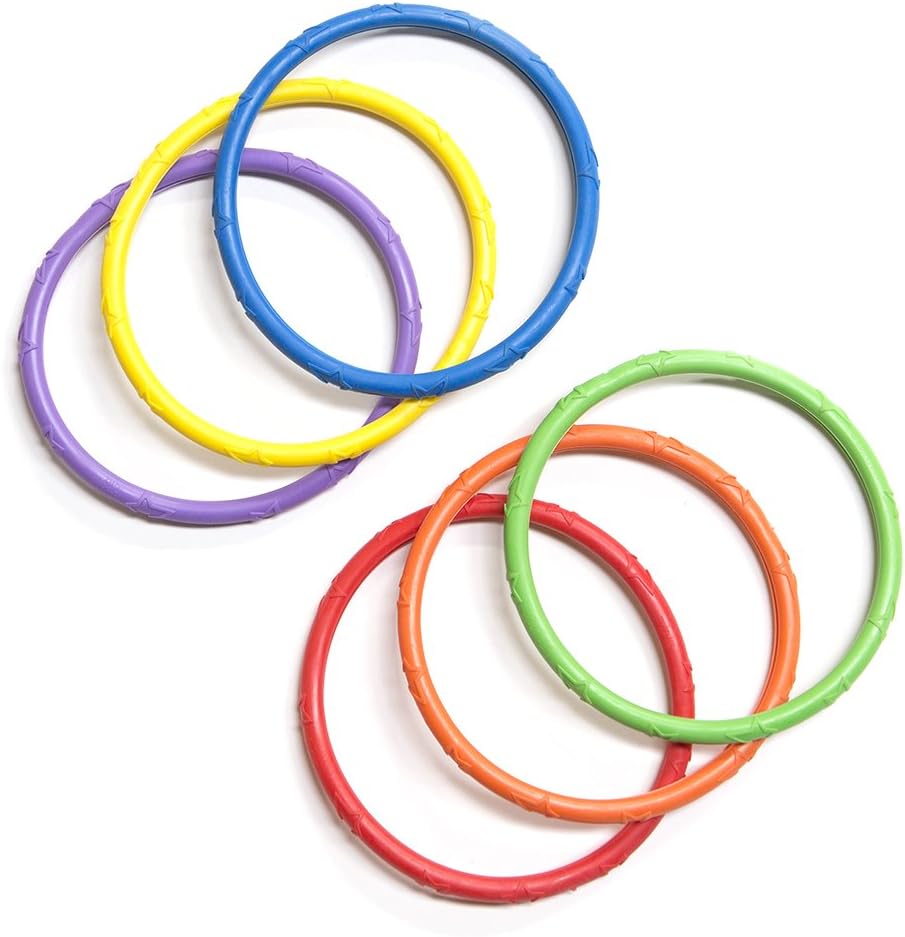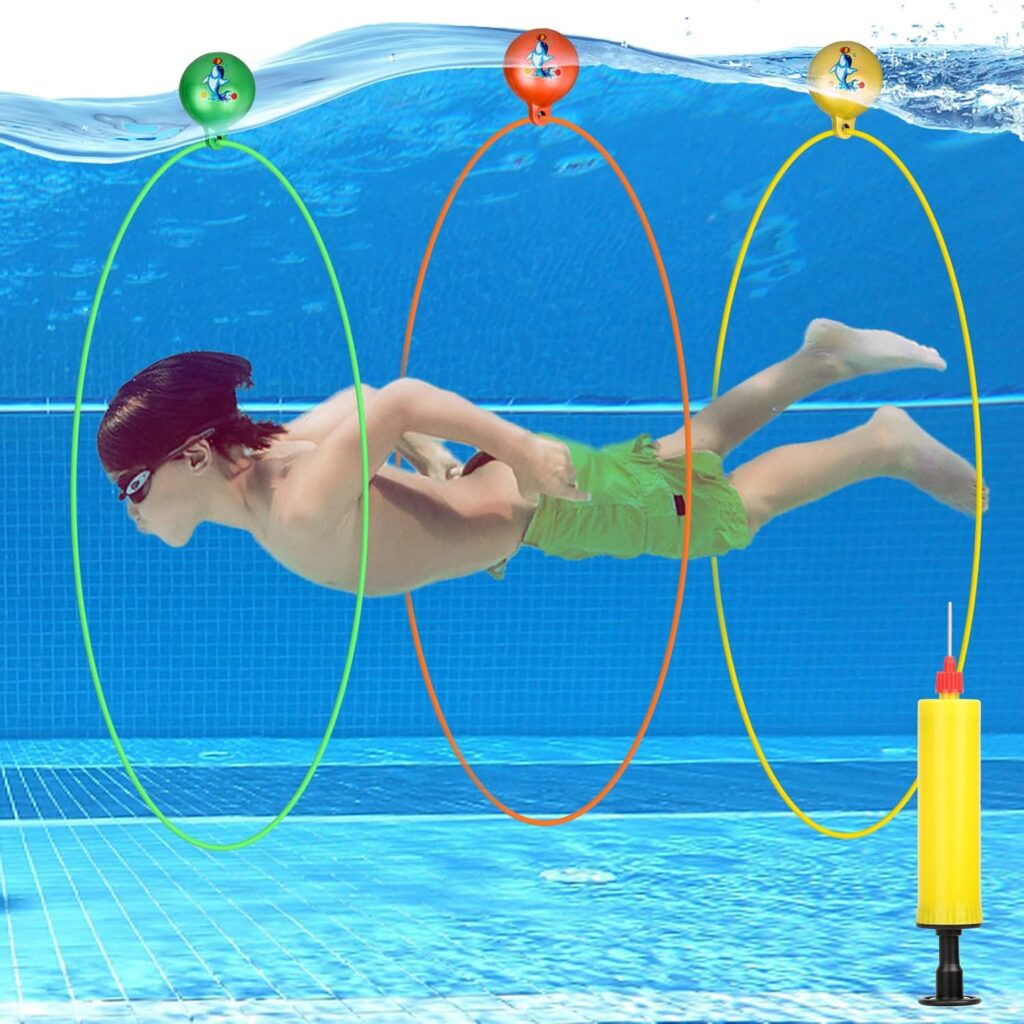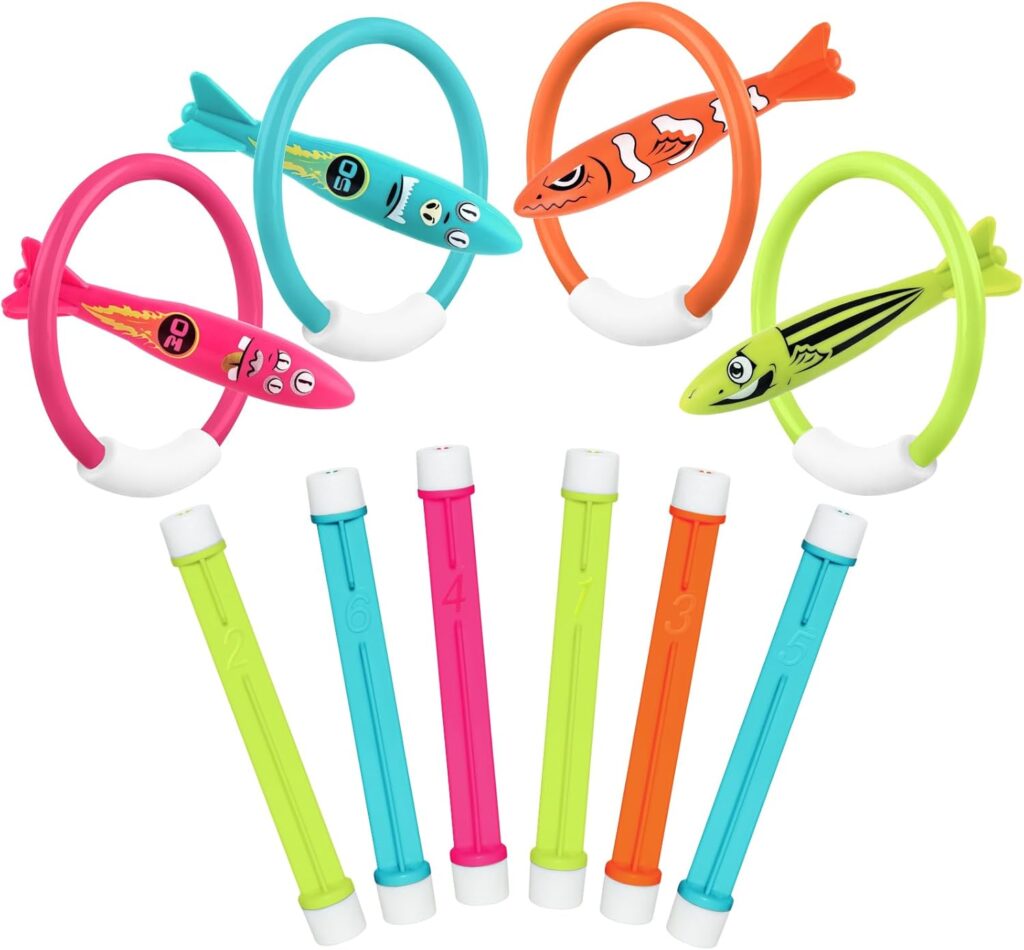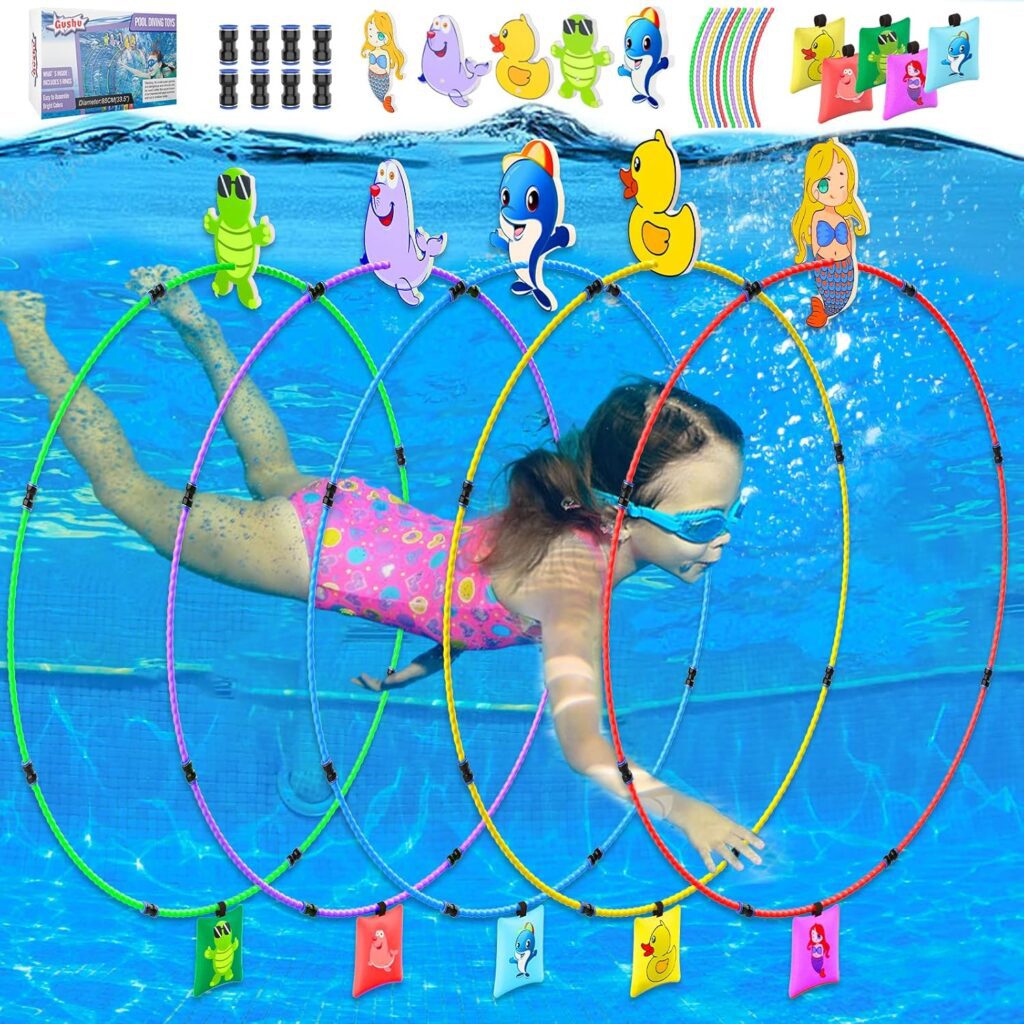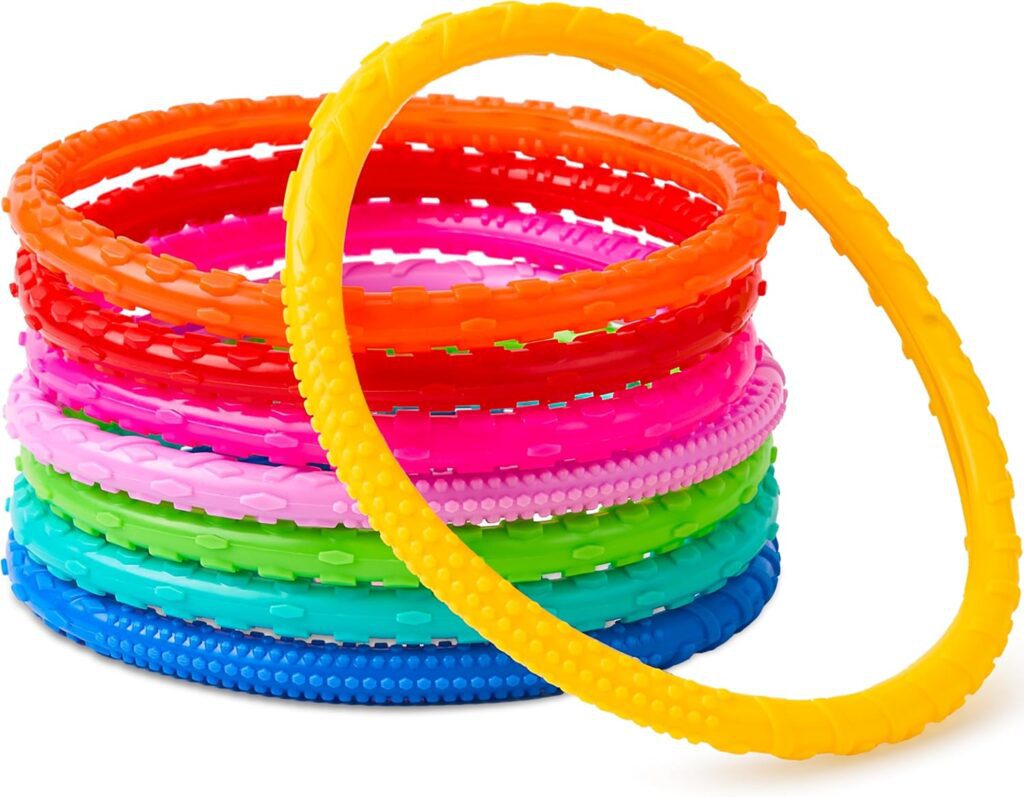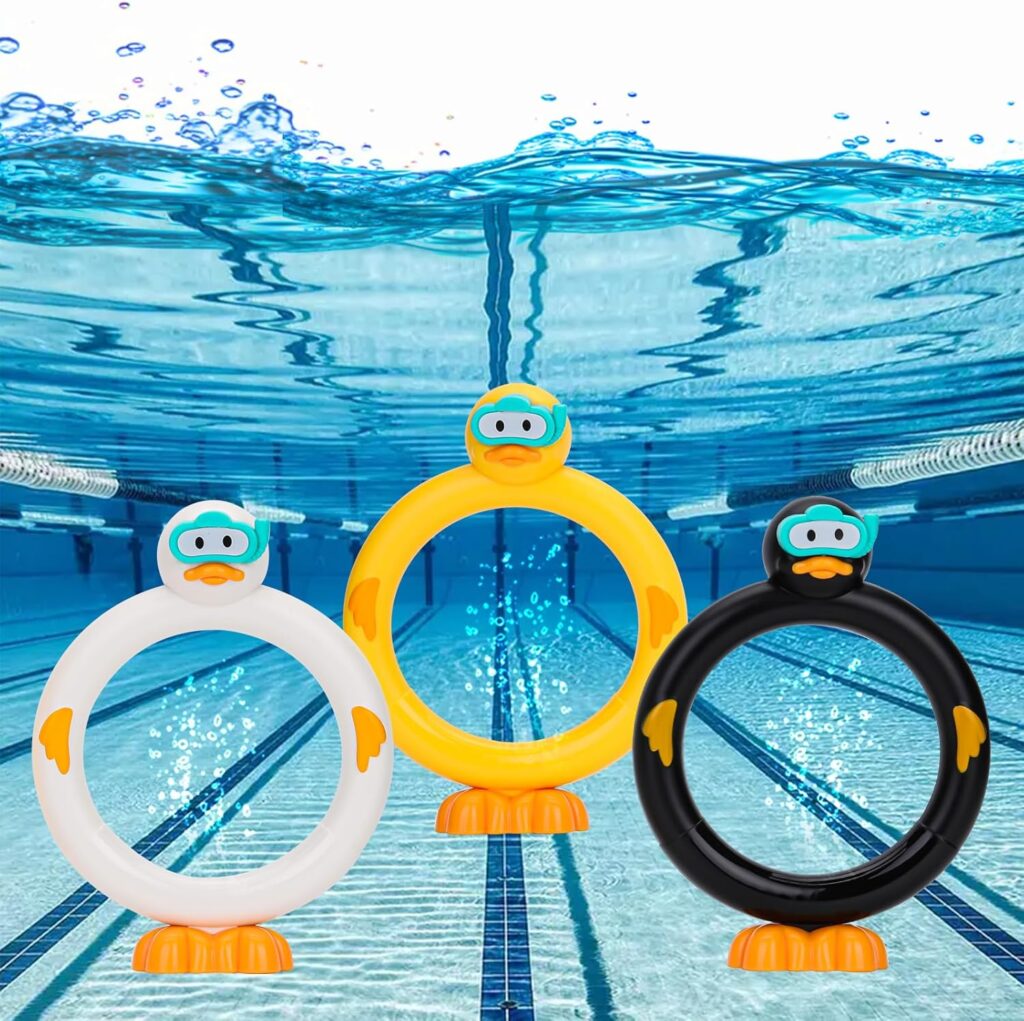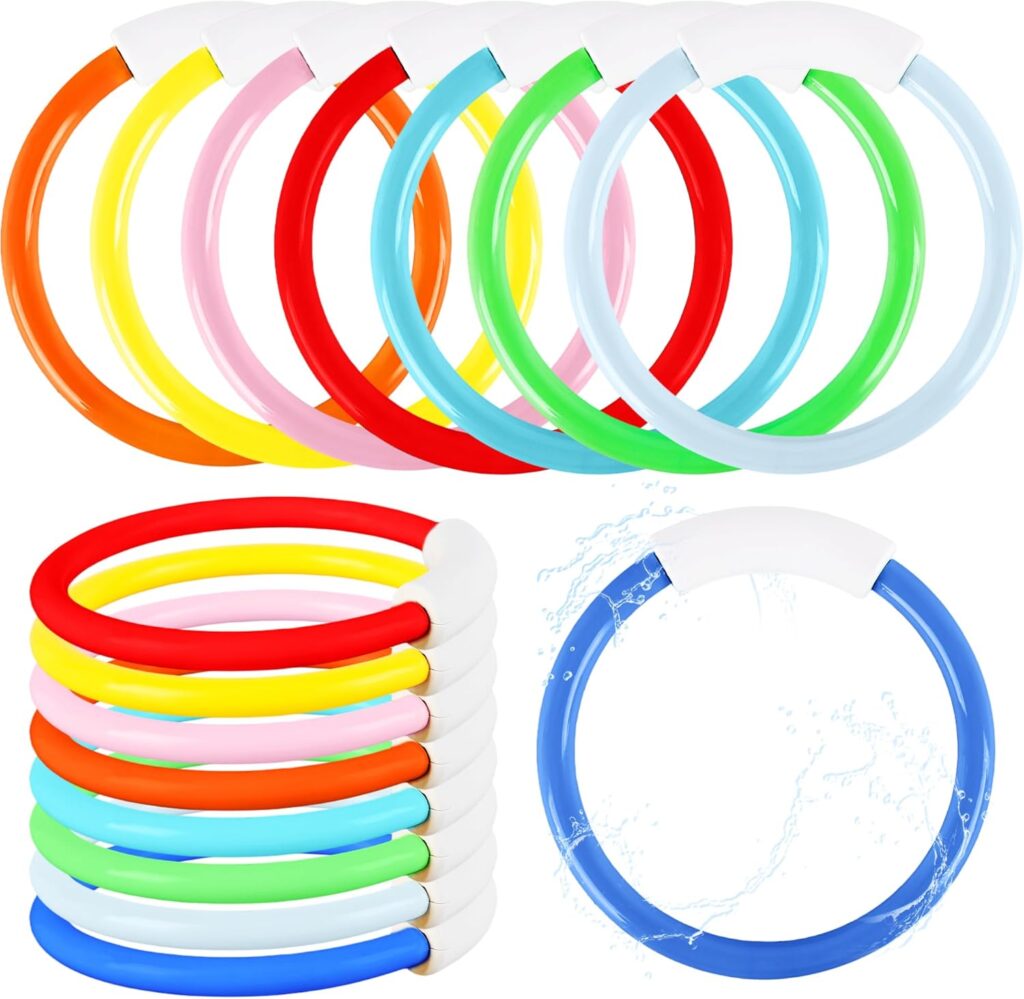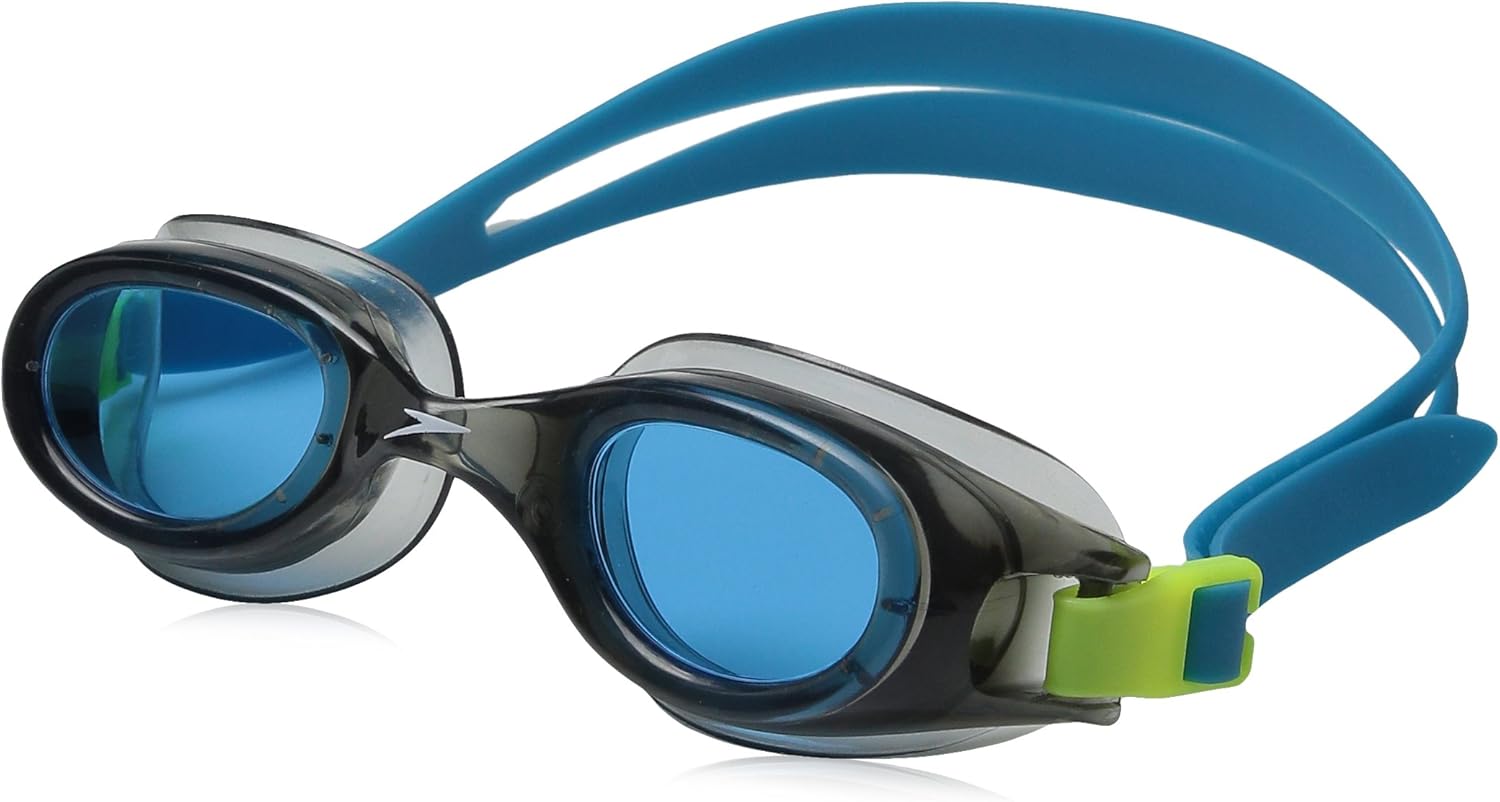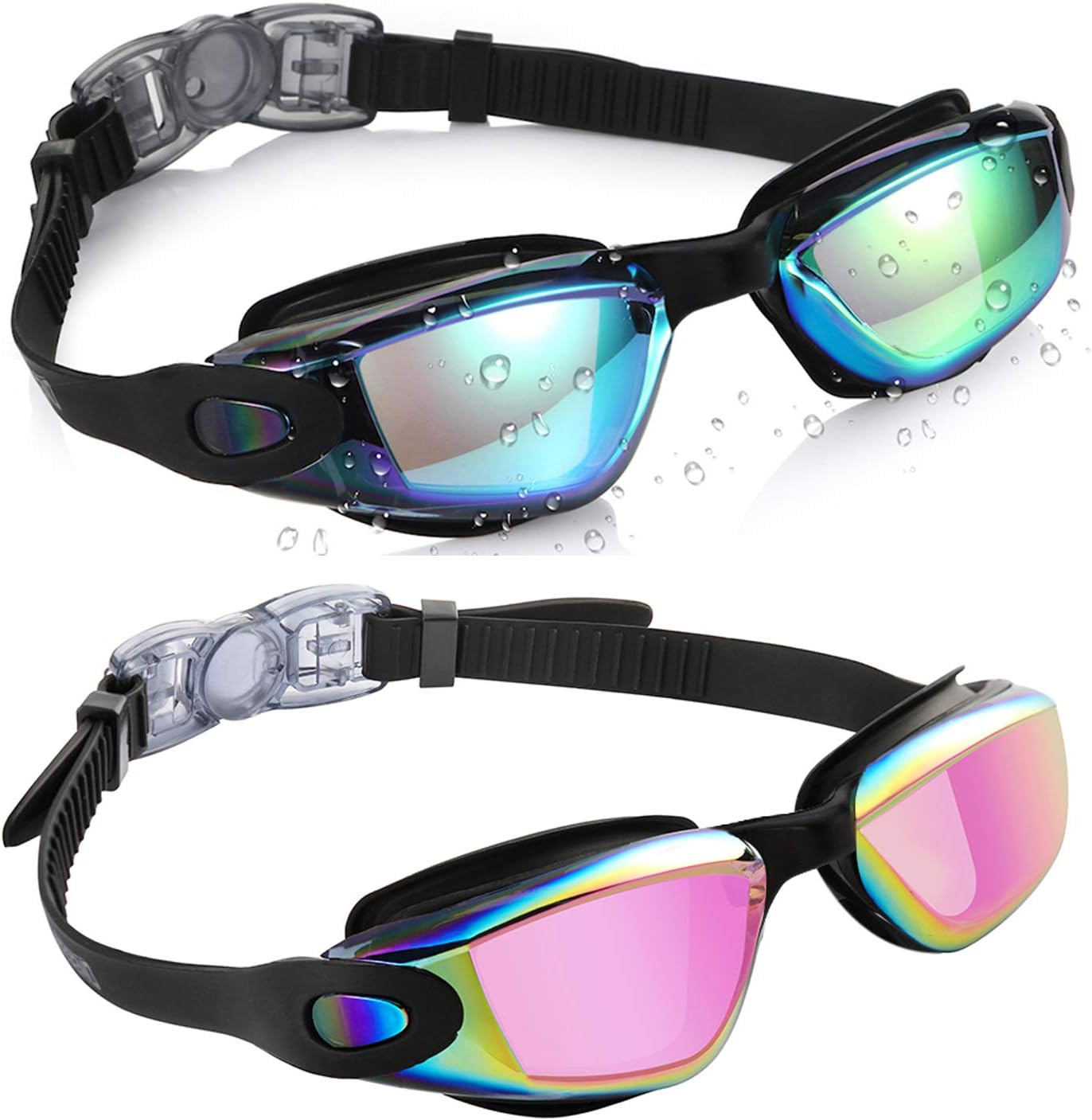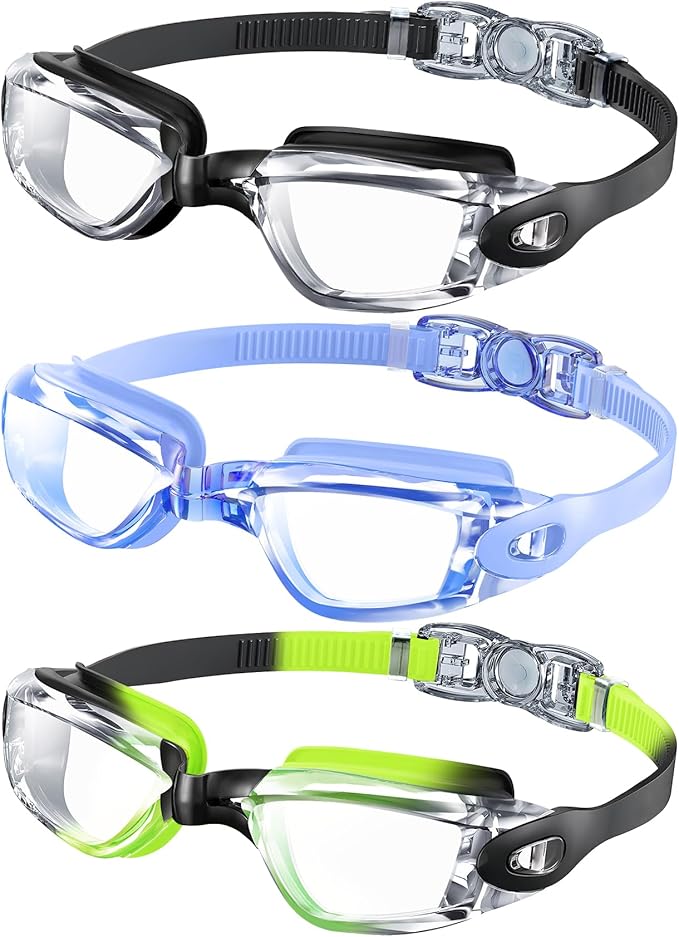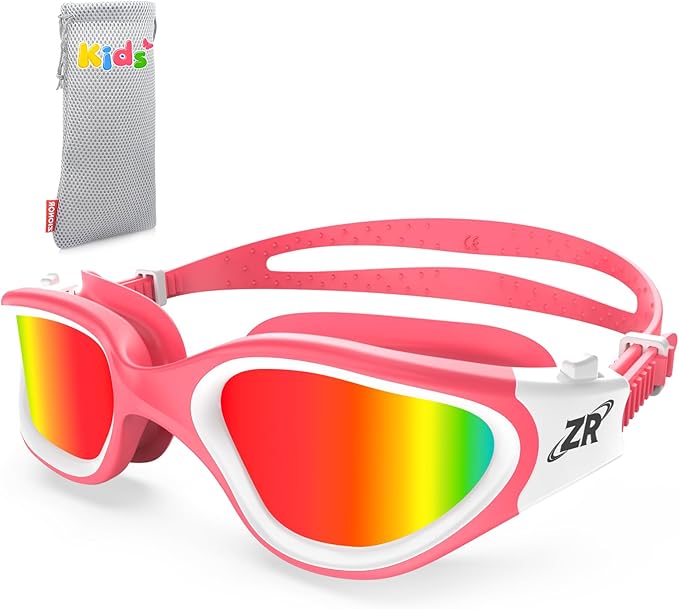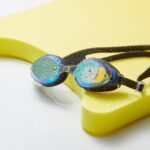10 Best Diving Rings For Swimming Pools
Diving rings for swimming pools: the toys that turn a calm day in the pool into a scene from a low-budget pirate treasure hunt. The only difference is nobody’s finding gold, just a neon ring that keeps sinking to the same spot.
But here’s the real catch: while they look like innocent fun, people search for them with serious questions. Are they safe? Which ones actually work? Do they last longer than a single summer? Before you buy a set that might sink straight into disappointment, let’s cover exactly what you need to know.
What Are Diving Rings for Swimming Pools?
Diving rings for swimming pools are weighted toys designed to sink to the bottom so swimmers can dive down and retrieve them. They’re used for fun, but also for teaching underwater confidence, breath control, and swimming skills.
Manufacturers design them in bright colors for visibility, different weights for various depths, and soft materials for safety. Some sets come with dive sticks or even themed shapes, but the purpose is the same: to make swimming practice feel like a game.
Parents, swim instructors, and even adults use them because they offer a structured way to build confidence underwater without the feeling of “training.” The right set combines safety, durability, and easy visibility: three things we’ll explore in detail.
Best Diving Rings for Swimming Pools
For anyone looking to add fun, training value, and skill-building to pool time, diving rings for swimming pools remain a top choice. They turn ordinary swims into engaging challenges while helping improve underwater confidence and breath control.
With so many options available, choosing the right set depends on quality, ease of use, and durability. Here are the best diving rings for swimming pools:
1. Water Sports Swim Thru Rings
These large, collapsible rings stand out for their easy depth adjustment and quick setup. Stability in the water is excellent, making them ideal for swimmers practicing underwater navigation. The foldable design keeps storage simple without sacrificing quality.
Pros
- Large 30-inch size for better visibility
- Depth adjustable for skill progression
- Collapsible design for compact storage
- Sturdy build with good stability in water
- Quick to assemble and disassemble
Cons
- May require a wide pool area
- Pricier than smaller sets
2. Keeparlus Fun Swimming Pool Toys for Kids
Lightweight and colorful, this set provides an easy way to introduce children to underwater play. The rings stay upright during use, reducing frustration for beginners. With bright colors, they’re easy to spot even at deeper levels.
Pros
- Vibrant colors for high visibility
- Designed for ages 4–12 with safety in mind
- Lightweight yet durable materials
- Quick water stability for easier retrieval
- Affordable price for family use
Cons
- Limited to younger swimmers
- May not withstand heavy rough play
3. FULLSEXY Underwater Pool Toys Gift Set
Offering a mix of rings and other dive toys, this set adds variety for kids learning underwater skills. Materials feel sturdy, holding up well to repeated use. The bright color mix keeps the games visually exciting.
Pros
- Multiple toy types for diverse games
- Good durability under regular use
- Bright color scheme for easy spotting
- Suitable for multiple age groups
- Encourages longer water play sessions
Cons
- Smaller rings not ideal for beginners
- Requires moderate pool depth for best results
4. Banzai Spring & Summer Toys Pool Time Dive Rings
This set provides simple yet effective rings for casual pool fun. Their lightweight design ensures they sink slowly, helping nervous swimmers practice with confidence. Colors remain vibrant even after several uses.
Pros
- Slow sinking speed for safer play
- Bright colors resist fading
- Simple design for easy setup
- Budget-friendly pricing
- Lightweight for younger swimmers
Cons
- Limited stability in windy outdoor pools
- Not ideal for competitive swimming drills
5. Cludoo Pool Diving Swim Thru Rings Toys
These rings arrive ready to use with no assembly required, saving time during setup. Their stable underwater stance makes them great for practicing swim-through drills. High-quality materials give them better longevity than many budget options.
Pros
- No assembly needed for convenience
- High underwater stability
- Suitable for a wide age range
- Durable construction for regular use
- Easy storage after use
Cons
- Larger size needs more pool space
- Slightly heavier than similar models
6. Korlon Pool Toys for Kids
Packed with multiple diving toys, this set keeps children engaged with a mix of shapes and colors. Materials handle chlorine exposure well, lasting through an entire season. Different sinking speeds provide skill variety for multiple ages.
Pros
- Large set with different toy types
- Chlorine-resistant materials for durability
- Bright colors enhance visibility
- Varied sinking speeds for skill growth
- Suitable for group games and parties
Cons
- Storage bag quality could be better
- Some pieces smaller than expected
7. Gashu Diving Toys 15 PCS Set
Combining rings, buoys, and sandbags, this set supports more creative underwater games. The pieces stay upright at the bottom, making retrieval easier for children. Materials hold up well to daily swimming sessions.
Pros
- Variety pack with multiple game options
- Upright positioning for easier grabs
- Designed for extended play sessions
- Colorful pieces for visual appeal
- Works well in both small and large pools
Cons
- Heavier toys may sink too fast for beginners
- More parts mean higher chance of losing pieces
8. JOYIN Dive Circles Pool Toys
JOYIN offers eight bright rings that sink consistently, helping kids focus on diving skills rather than chasing floating toys. Materials resist cracking under sun exposure, adding to their durability. A good option for families looking for a mid-size set.
Pros
- Consistent sinking speed
- UV-resistant materials for outdoor use
- Eight-piece set offers good value
- Bright colors stay visible underwater
- Lightweight enough for younger swimmers
Cons
- Rings may warp slightly over time
- Limited skill variety compared to mixed sets
9. DOADW Diving Pool Toys Duck Diving Ring
Shaped uniquely like a duck, this ring adds a playful twist to traditional diving toys. Its design attracts kids’ attention while still offering reliable sinking speed. Made from soft materials, it stays safe for younger swimmers.
Pros
- Fun animal design for kids
- Soft materials for safer use
- Consistent sinking behavior
- Bright colors stay easy to see
- Compact size for small pools
Cons
- Single design lacks variety
- Not ideal for advanced training drills
10. Flahard 16 Pcs Pool Diving Swim Toys Set
Featuring sixteen pieces, this set is perfect for group games or party settings. Multiple shapes and colors keep kids engaged through longer pool sessions. Materials resist fading and maintain shape after repeated dives.
Pros
- Large set size for group activities
- Multiple colors and shapes for variety
- Fade-resistant materials for durability
- Suitable for different age ranges
- Good value for the number of pieces
Cons
- Requires more storage space
- Some pieces may sink too quickly for beginners
Safety First: What Every Parent and Swimmer Should Know
Before choosing any diving pool toys or dive rings for pool use, safety should be top of mind. The U.S. Consumer Product Safety Commission (CPSC) emphasizes two big points: constant supervision and removing toys from the pool when swimming ends.
Leaving toys in the water tempts children back into the pool when adults might not be watching, a major risk factor for accidental drownings.
In 2023 alone, the CPSC reported thousands of emergency visits tied to pool-related injuries for children under 15. Most involved unsupervised moments near the water. That’s why diving rings should only be used when someone is actively watching, preferably within arm’s reach for young swimmers.
Another factor is pool depth. Shallow-water use should be standard for beginners. Never place diving toys in water too deep for the swimmer’s height and skills. Swim schools often start in three to four feet of water before moving to the deep end for advanced practice.
Also, check the toy’s packaging for compliance with ASTM F963, the safety standard covering mechanical hazards, toxic materials, and sharp edges in children’s toys. It became mandatory under federal law in 2024, so any reputable brand should list it.
How to Choose the Right Diving Rings
People often assume any set will do, but that’s why bad experiences happen. Choosing the right diving rings depends on swimmer skill level, pool depth, and durability.
- For beginners: Larger rings that settle slowly in shallow water reduce panic and help swimmers focus on technique instead of rushing.
- For intermediate swimmers: Mid-size rings with moderate sinking speed keep the challenge balanced.
- For advanced swimmers: Smaller rings or mixed sets with dive sticks create variety for speed games and competition.
Color visibility also matters. Bright yellow, orange, or neon green rings stand out against blue pool tiles. Dark colors often vanish at depth, making retrieval stressful for learners.
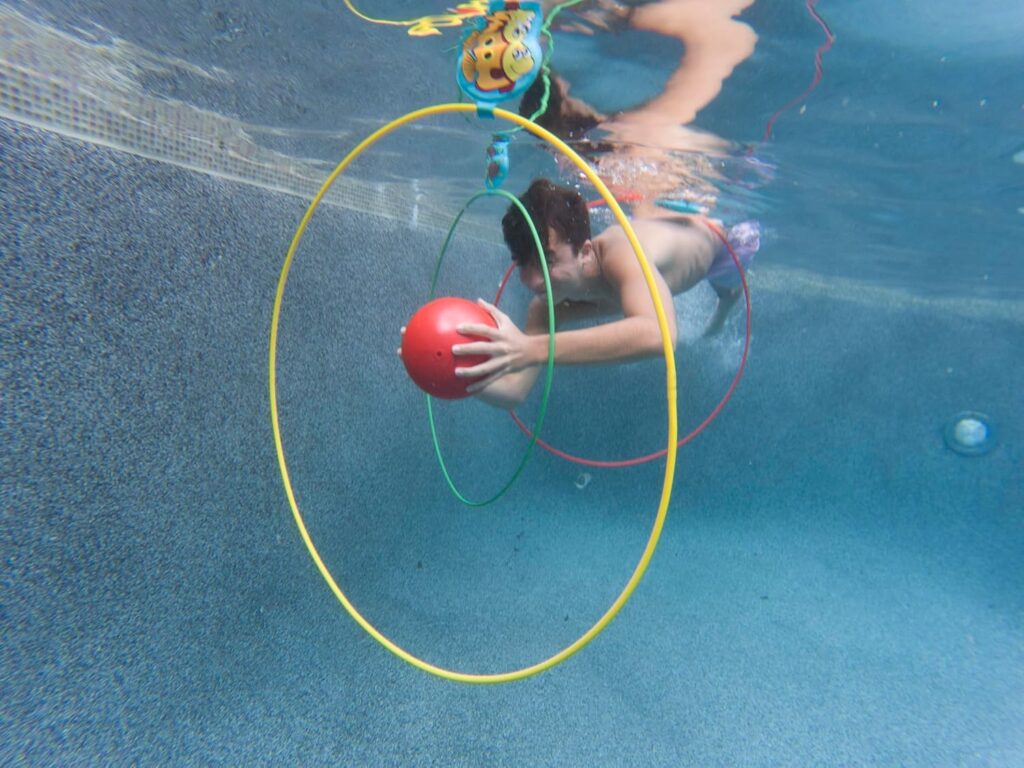
Durability: How Long Do They Really Last?
Many people complain that diving pool toys split or crack after one season. Chlorine, sunlight, and rough handling all speed up wear and tear.
Here’s what to look for:
- Material strength: PVC and ABS plastics last longer than thin, hollow plastics that crumble with UV exposure.
- Seam quality: Smooth, welded seams resist splitting better than glued joints.
- Storage habits: Leaving toys in the sun accelerates fading and brittleness. Rinse and store in shade to extend life by two to three seasons.
Swim schools often replace heavily used sets yearly, but home users can stretch that timeline with proper care.
Teaching Skills with Diving Rings
Structured practice keeps things safe and fun. Swim instructors often follow a simple progression:
- Shallow retrievals: Place the ring near the pool wall in waist-deep water. Swimmers bend, submerge briefly, and grab it.
- Breath control focus: Rings are placed farther out, requiring swimmers to plan a breath before diving.
- Depth progression: As skills improve, rings go deeper. Always adjust depth to comfort level.
- Timed games: Once confidence grows, use multiple dive rings for pool retrievals as relay races or treasure hunts.
These steps align with best practices from the American Red Cross, which recommends gradual skill-building over rushed deep-water exposure.
Fun Variations: Mixing Dive Rings, Sticks, and Other Toys
Boredom kills motivation faster than anything. That’s why many sets combine dive sticks, rings, and sinking torpedoes. Each sinks differently, creating new challenges:
- Dive rings: Predictable, upright landing for beginners.
- Dive sticks: Vertical targets that stand on the pool floor.
- Torpedoes: Glide through the water for advanced chasing games.
Variety keeps practice fresh while improving coordination and breath control.
Maintenance: Cleaning and Storing Diving Rings
Dirty or slimy toys ruin the experience fast. After every session:
- Rinse toys with fresh water to remove chlorine or salt.
- Dry them in shade, direct sunlight weakens plastics.
- Store in a mesh bag to prevent trapped moisture and mildew.
Once a month, soak them in a mild vinegar-water mix for deep cleaning. This prevents algae buildup, especially in humid climates.
Cost and Value: Budget vs Branded Sets
Price ranges from $10 for basic sets to $40 or more for branded collections. Higher prices often bring:
- Softer materials for safety
- Better colorfastness against chlorine
- Storage bags or scoring systems for games
Budget sets work fine for casual use, but swim schools or families using them daily often prefer mid-range or premium kits for durability.
FAQs on the Best Diving Rings for Swimming Pools
Do diving rings help kids learn swimming faster?
Yes. They turn skill drills into games, keeping children engaged longer than traditional lessons.
Are they safe for toddlers?
Only with shallow water, constant supervision, and age-appropriate designs. Some brands make oversized rings for very young swimmers to reduce choking risks.
Can adults use them for training?
Absolutely. Freediving and snorkeling classes sometimes use heavier versions to build breath-hold capacity safely.
Do colors fade over time?
Yes, especially if left in chlorine and sunlight. Proper storage doubles lifespan.
Integrating Swim Goggles Naturally
|
|
|
|
To enjoy diving games fully, swimmers need clear vision underwater. That means learning how to choose swimming goggles carefully: fit, anti-fog coating, and lens tint all matter.
Beginners should know how to wear swimming goggles properly to prevent leaks, and routine care like how to clean swim goggles keeps them from scratching or fogging up. The best swim goggles for kids often come with soft seals and UV protection, perfect for sunny outdoor pools.
House Rules for Pool Safety
Every home or public pool should set simple rules before introducing diving toys:
- No pushing or racing into shallow water.
- One swimmer retrieves at a time to prevent collisions.
- Rings removed after play to discourage unsupervised swimming.
These rules align with Red Cross recommendations for recreational water safety.
When to Replace Diving Rings
Replace sets if:
- Seams split or pieces break off (choking hazard).
- Colors fade so badly they become invisible underwater.
- Materials feel brittle or sharp edges appear.
A quick seasonal inspection prevents surprises mid-summer.
The Bottom Line on the Best Diving Rings for Swimming Pools
Best diving rings for swimming pools bring fun, skill-building, and confidence to the water when used safely and wisely. By choosing the right set, following safety guidelines, maintaining them properly, and mixing in variety, you turn a simple toy into a powerful teaching tool.
From beginner breath control to advanced timed challenges, these rings make swimming practice engaging for all ages. Add quality goggles, clear house rules, and routine care, and you have a recipe for safe, long-lasting fun in every splash.

